
María Guadalupe Araujo Yong, better known as Ana Gabriel, is a Mexican singer and songwriter. During her long career, she has performed different genres of music and has received several accolades. As a result, she has been called La Diva de América and La Luna de América.

Altagracia Ugalde Motta, better known as Ana Bárbara, is a Mexican singer. She has become a prominent figure within Latin entertainment since her professional debut in 1994 and is one of the leading female figures in regional Mexican music.

Natalia Altea Jiménez Sarmento, known professionally as Natalia Jiménez is a Spanish singer-songwriter who started her musical career in the 2000s as vocalist of La Quinta Estación. Her first disc as a soloist was titled Natalia Jiménez. She has received Grammy and Latin Grammy Awards and has sold more than 3 million albums worldwide, during her solo career. She has recorded duets with the main stars of Latin music, including Marc Anthony, Daddy Yankee and Ricky Martin among others.

Un Estilo is the first studio album by Mexican pop singer Ana Gabriel. It was released on 1985. She participated with the song Búscame in the OTI Festival which media started to know about her. In the beginning she found it difficult, as no label was willing to give her the opportunity, til the then-label CBS Records, now Columbia Records, signed her. The sales of the album were low, though it was received well. The album also features a cover of the Eurythmics song "Right By Your Side" entitled Sin ti no sé amar.

Pecado Original(English: Original Sin) is the third studio album by Mexican singer Ana Gabriel. It was released by CBS Records on December 8, 1987. The album was produced by Mariano Perez Bautista.

Quién como tú is the fifth studio album by Mexican pop singer Ana Gabriel. It was released on November 17, 1989. The album was nominated to the Grammy Award for Best Latin Pop Album in 1990, but lost to José Feliciano's ¿Por Qué Te Tengo Que Olvidar?. The album was awarded "Pop Album of the Year" at the 1991 Lo Nuestro awards. The album reached number one in the Billboard Latin Pop Albums staying in the chart for 48 weeks.
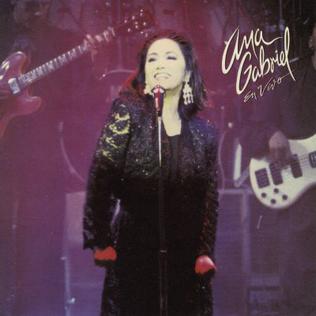
En Vivo is the sixth album by Mexican pop singer, Ana Gabriel. It was released on 1990. This album reached No. 1 in the Billboard Latin Pop Albums. This was her first live material and was nominated for Pop Album of the Year at the Lo Nuestro Awards of 1992.

Mi México is the seventh studio album by Mexican pop singer Ana Gabriel. It was released in 1991. In this album, she left behind her usual pop genre and instead sang in ranchera and regional styles. By 2009, Mi México had sold 4.5 million copies worldwide.

Silueta is the eighth studio album by Mexican pop singer Ana Gabriel. It was released in 1992. This material was produced by Gabriel and Max Pierre.
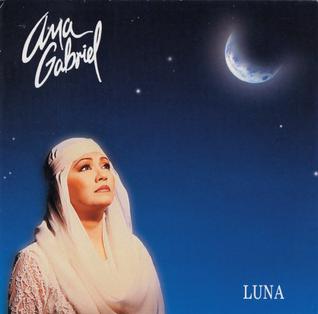
Luna is the ninth studio album by Mexican pop singer Ana Gabriel. It was released on November 9, 1993. This material was produced by herself.

Ayer y Hoy is the 10th studio album by Mexican pop singer Ana Gabriel. It was released on 1994. This material was produced by herself. She praises several idols of ranchera music with this material like Agustín Lara, José A. Jiménez, Juan Gabriel, Armando Manzanero and Cuco Sánchez. Ayer y Hoy was nominated for a Lo Nuestro Award for Regional Mexican Album of the Year at the 7th Lo Nuestro Awards.

Joyas de dos siglos is the eleventh studio album by Mexican pop singer, Ana Gabriel. It was released on 1995. This material was produced by herself and Diana Veronica Paredes. This album is somewhat of a departure from Gabriel's usual style, but it is one of the artistic high points of her career. It was nominated for Regional Mexican Album of the Year at the Lo Nuestro Awards of 1996.

Vivencias is the twelfth studio album by Mexican pop singer, Ana Gabriel. It was released on 1996. This material was produced by herself.

Soy como soy is the 15th studio album by Mexican pop singer, Ana Gabriel. It was released on 1999. This material shows her firmly planted in the pop music, guided by the masterful hand of producer Emilio Estefan Jr. Gabriel composed some of the songs, with collaborations by Estefan himself, as well as renowned pop composer Kike Santander. It was recorded at Crescent Moon Studios, Miami, Florida.
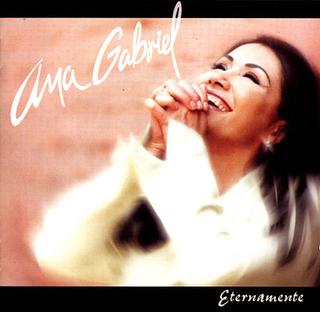
Eternamente is the 16th studio album by Mexican pop singer Ana Gabriel. It was released in 2000. This material shows a nostalgic Ana Gabriel where she pays tribute to the Bolero's fathers Los Panchos and Los Diamantes. It was recorded at Sony Studios, Mexico.

Tradicional is the 19th studio album by Mexican pop singer, Ana Gabriel. It was released in 2004. This album goes from the regional styles of Mexican music to ska. It was nominated in the category of Best Ranchero Album in the Latin Grammy Awards of 2005, but lost to Luis Miguel's México en la Piel.
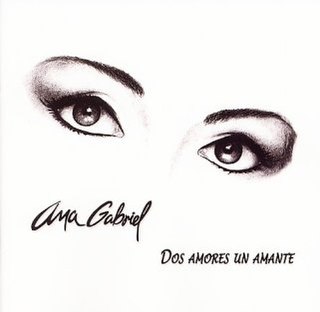
Dos amores un amante is the 20th studio album by the Mexican pop singer, Ana Gabriel. It was released in 2005. It was produced by herself. It was nominated in the category of Female Latin Pop Album Of The Year in the Latin Billboard Music Awards of 2007, but lost to Paulina Rubio's Ananda.
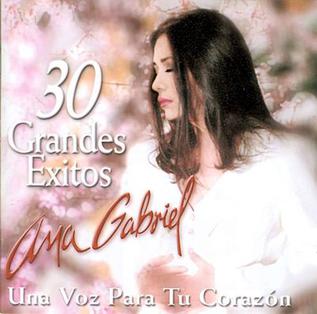
Una Voz Para tu Corazón – 30 Grandes Éxitos is a compilation album by the Mexican pop singer, Ana Gabriel.

La casa de al lado is an American Spanish-language black comedy telenovela produced by the United States-based television network Telemundo. This mystery is a remake of the Chilean telenovela La familia de al lado produced by TVN in 2010-2011 and is being adapted by the author of the original, José Ignacio Valenzuela making a story longer with many differences from the original.

Next to You is a 2018 Peruvian romantic comedy film directed by Martin Casapía Casanova and written by Samuel del Amor. Starring Alessandra Fuller and Andrés Vílchez. It premiered on March 1, 2018 in Peruvian theaters.




















